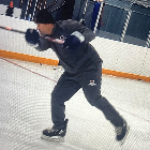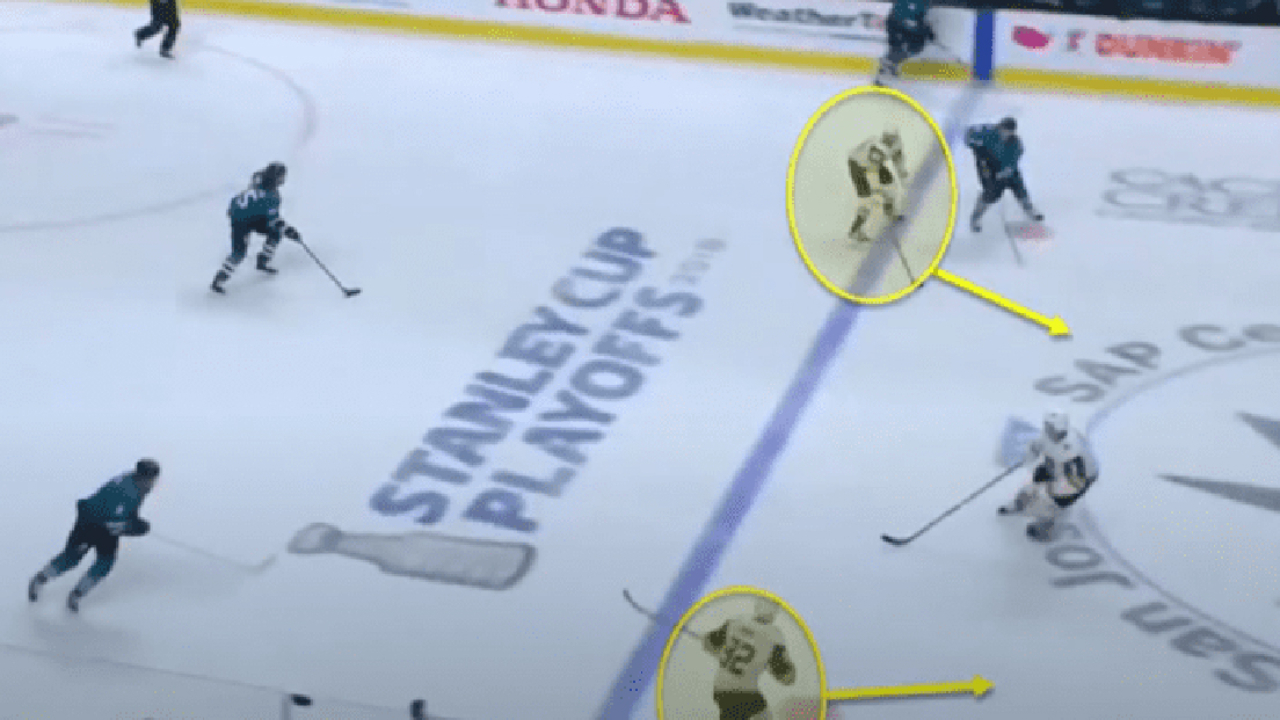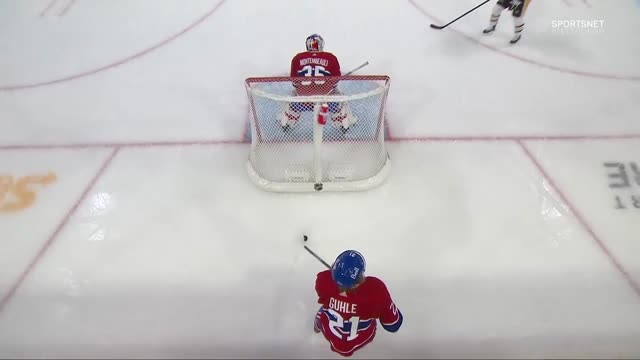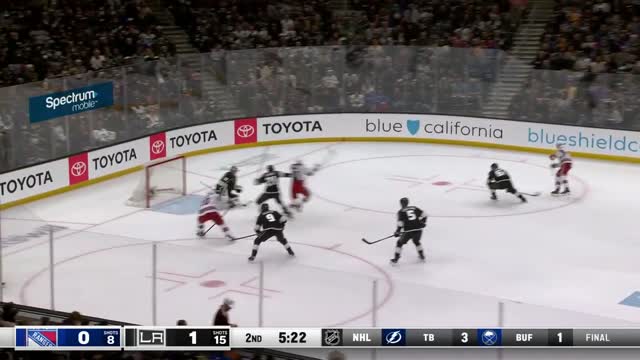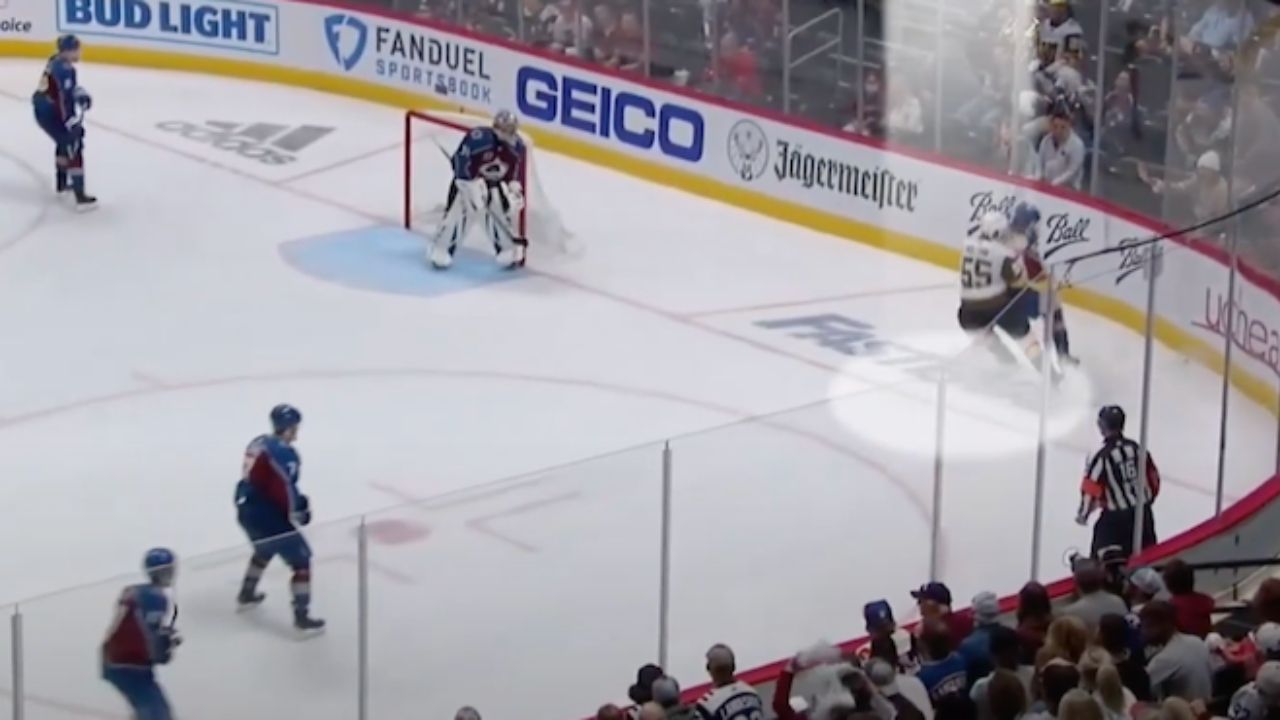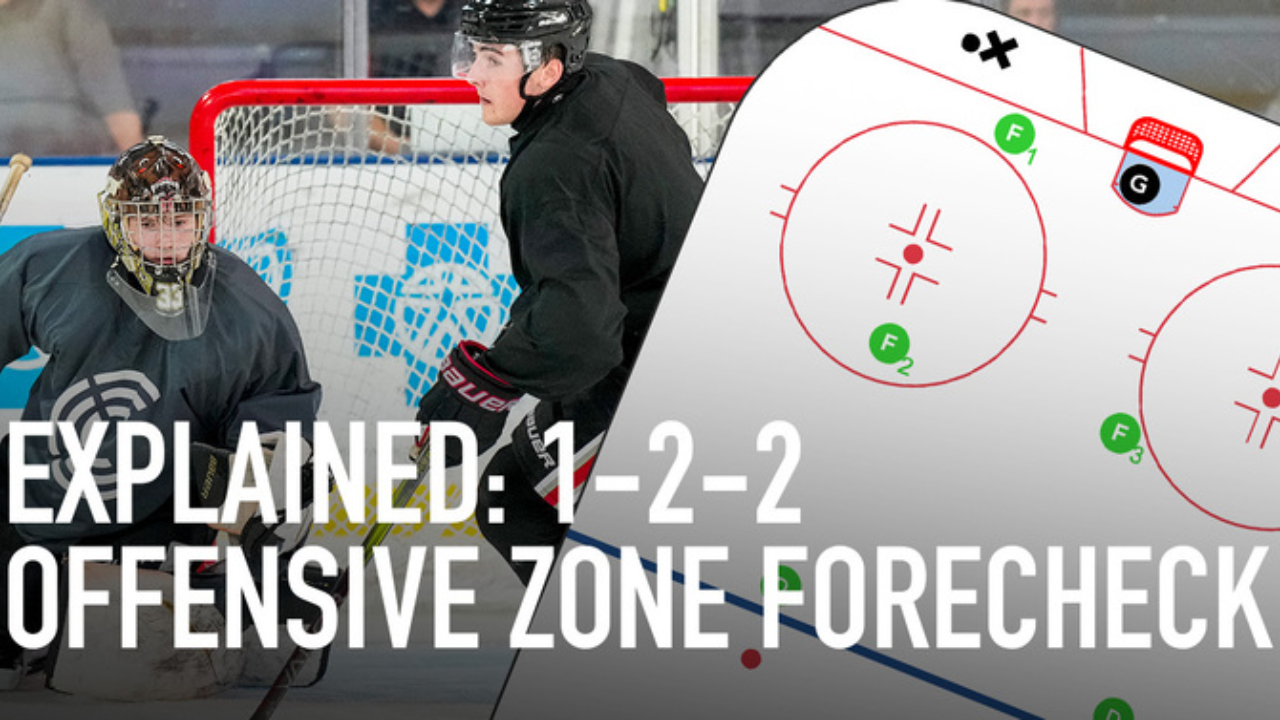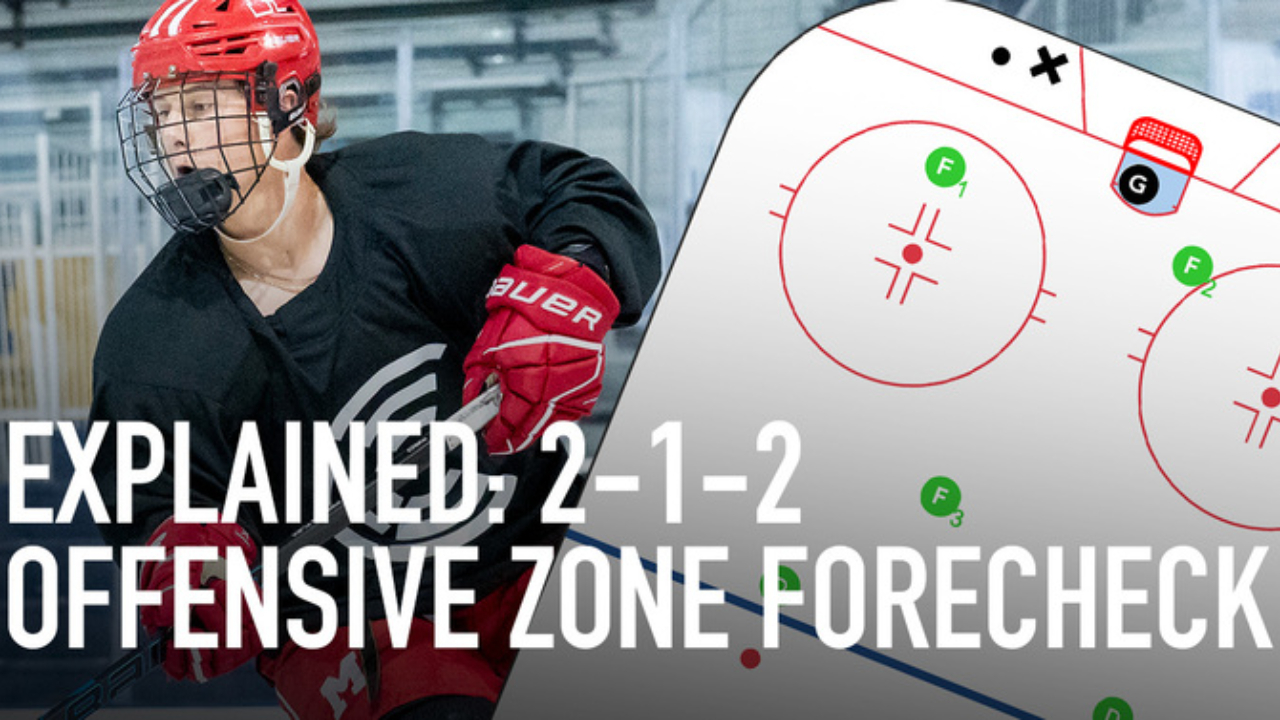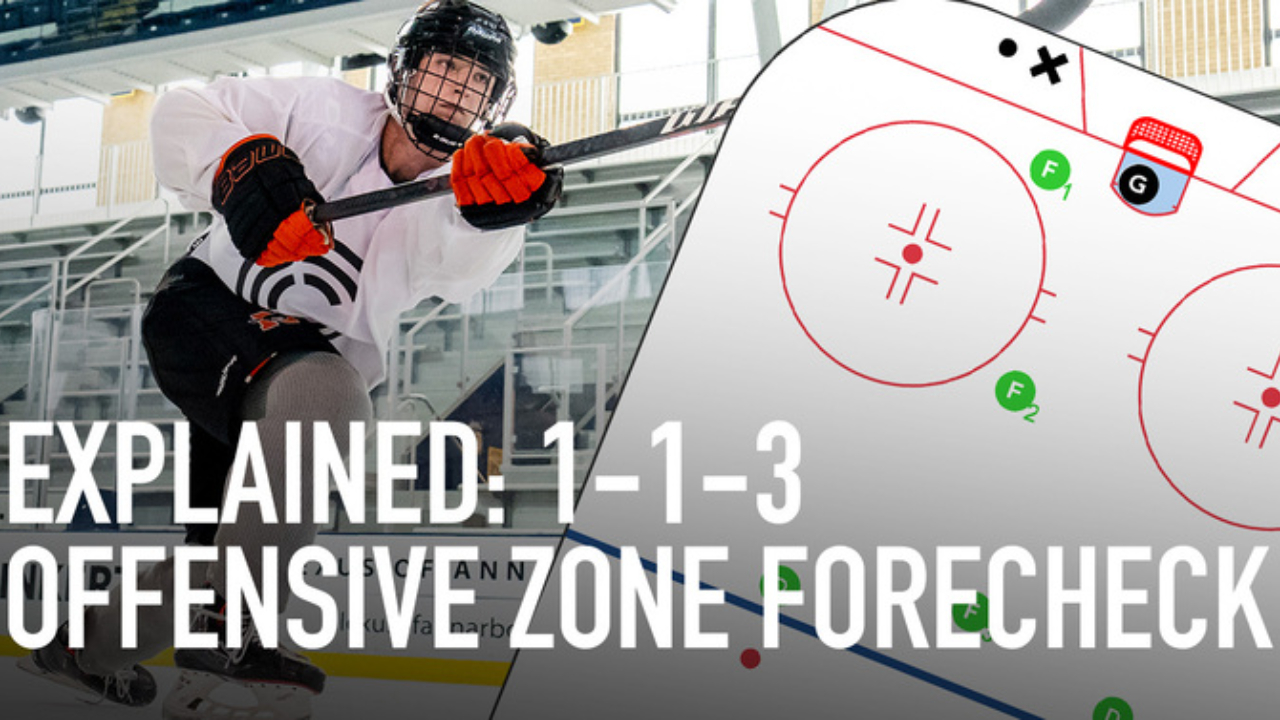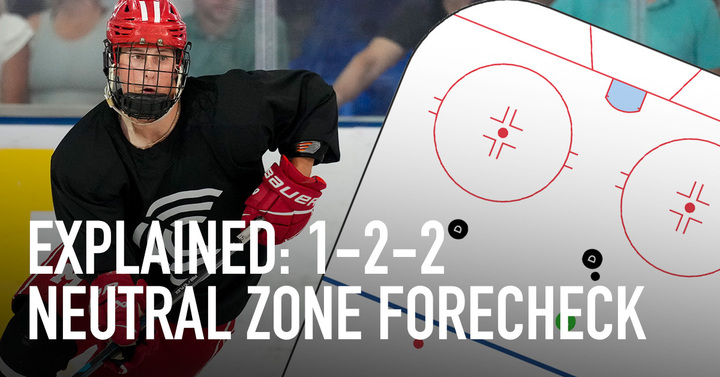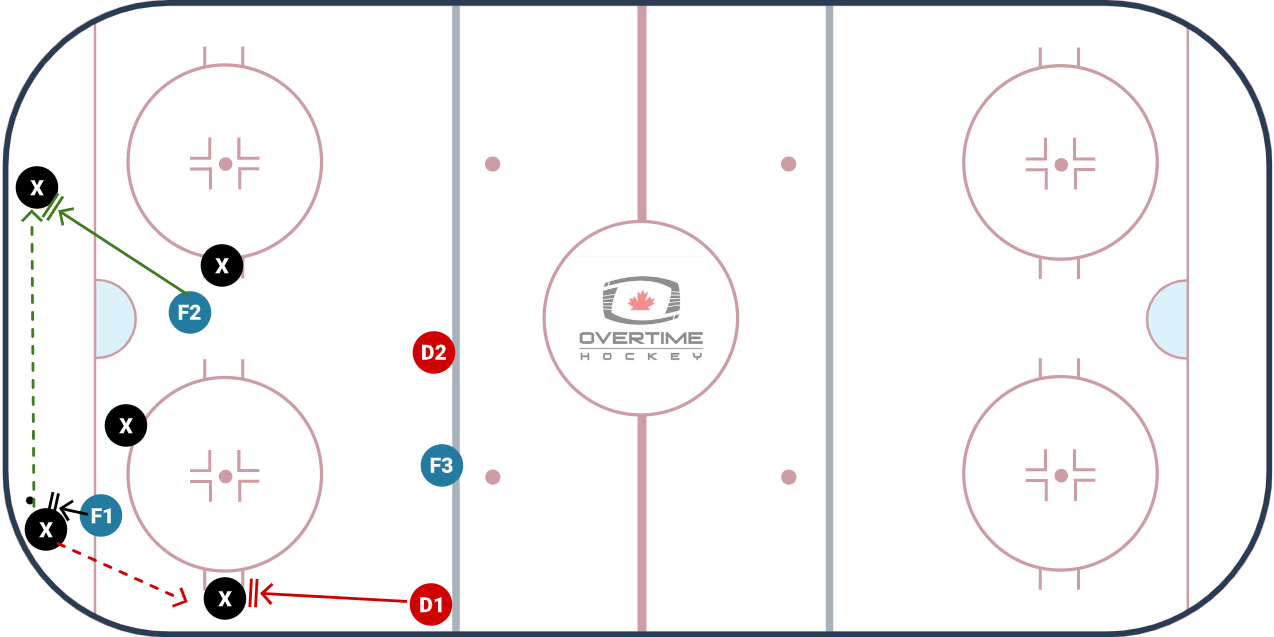
So your team is trying to figure out its identity and part of that process is finding out how you are going to forecheck and when. When I am out watching minor hockey games I am periodically blown away by some teams ability to execute textbook forechecks over and over and over. Part of it is certainly the players commitment but a big contributor to that successful forecheck is how we as coaches teach the responsibilities within it and to make sure we are choosing a forecheck that is beneficial to our team strengths but can also hide a bit of our weakness. The goal of any forecheck is simply to work to gain possession of the puck while protecting the middle of the ice.
I think the key to this is the age old acronym, KISS. Keep It Simple Smoky. Choose two forechecks; one for when you are looking for the lead and one for when you have it. Here we are going to go through a few different Forecheck options.
2-1-2
Spread
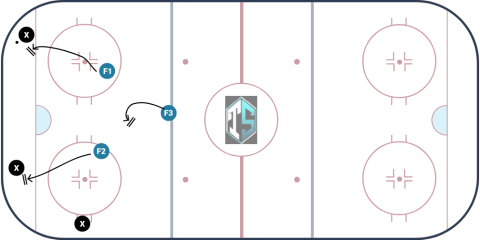
In the Spread option of the 2-1-2, good F1 pressure on the puck looks to angle the puck/puck carrier to the F2 who has taken away the reverse, rim, or wheel option. Strong F3 responsibility locks down any option for a C option. If the puck is sent around the strong side, F2 becomes F1, F3 becomes F2 and F2 becomes F3.
Strengths: Fills lanes, good for teams with intermediate hockey IQ, creates good scoring chances off a turnover.
Weakeness: F2 can get caught flat footed, if F1 misses their forecheck there is a lot of open ice along the strong side wall, if the opponent has good off-puck support they can keep the puck on the strongside away from F2.
When to Use: A great beginner forecheck to teach, great for younger teams and for teams looking to forecheck a weaker defensive opponent.
Stack
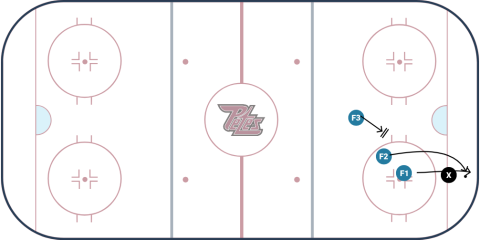 Stack is a more aggressive option of the 2-1-2 family. Here F1 goes hard to the puck and F2 gives good on puck support, either picking up the loose puck after F1 completes a check or switches to take the body if F1 loses their battle. F3 communicates any traffic and battles for open ice in the slot. Look for a quick pass option off a possession or work a cycle on the strong side.
Stack is a more aggressive option of the 2-1-2 family. Here F1 goes hard to the puck and F2 gives good on puck support, either picking up the loose puck after F1 completes a check or switches to take the body if F1 loses their battle. F3 communicates any traffic and battles for open ice in the slot. Look for a quick pass option off a possession or work a cycle on the strong side.
Strengths: Can really dominate against weaker defensive teams, causes a lot of turnovers off the pressure, forces quicker decisions by the opponent throughout the game.
Weaknesses: A weakside rim can eliminate all the pressure from F1 & F2.
When to Use: Again a great beginner forecheck and great to use early on in the game or when you are looking for a lead.
1-2-2
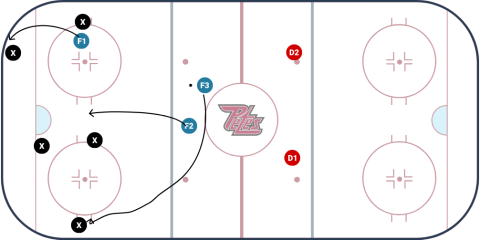
There are a few different options of the 1-2-2 but the easiest one I have found to explain to youth players is the Fooseball option. Here F1 is looking to pressure the puck to the weakside where F3 is going to pressure the winger and F2 is going to fill the middle lane. Again as with any forecheck, we want to protect the middle of the ice and force the puck up the boards. If the opponent reverses behind the net, F2 becomes F1, F1 becomes F3 and F3 becomes F2. Essentially they slide just like a Fooseball table.
Strengths: Can hide a bit of a mismatch in talent but using the entire forward core, can control the game by forcing the puck to places where we would be. Creates high quality scoring chances off turnovers.
Weaknesses: F1 has to make sure they take the right angle to the puck forcing the defenceman to the weakside, if the opponent makes a good read and reverses they can break this puck out fairly easy on the strong side
When to Use: Anytime. This is one of my favourite forechecks because any team, at any level, at any time can use this!
1-1-3
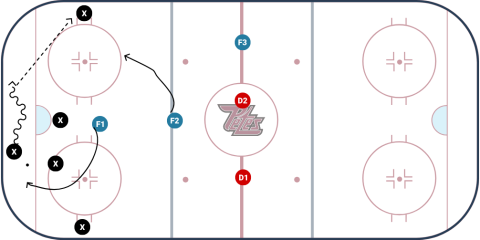 One of the ways the game has dealt with the increase of speed is the implementation of much more trap based forechecking. The 1-1-3 is a forecheck that has received a lot of attention in the last decade or so and it too has evolved. Traditionally a NZ forecheck set up, some teams have pushed the forecheck into the offensive zone where F1 will take a outside to in route forcing the puck up the wall, with this forecheck F2 isn't looking to initiate direct contact, rather they will surf (skate downhill and back uphill) trying to force the puck carrier into a waiting F3 or ice the puck.
One of the ways the game has dealt with the increase of speed is the implementation of much more trap based forechecking. The 1-1-3 is a forecheck that has received a lot of attention in the last decade or so and it too has evolved. Traditionally a NZ forecheck set up, some teams have pushed the forecheck into the offensive zone where F1 will take a outside to in route forcing the puck up the wall, with this forecheck F2 isn't looking to initiate direct contact, rather they will surf (skate downhill and back uphill) trying to force the puck carrier into a waiting F3 or ice the puck.
Strengths: Can be extremely effective in slowing down a fast opponent or slowing down the game when needed. Gives lots of off-puck support and protects the NZ and middle of the ice.
Weaknesses: Very complicated to execute correctly, F1 has to take the correct route and F2 has to angle properly. If the opponent is able to work the puck to the middle of the ice they will have a bit of time and space between a tracking F1 and our 3 wall.
When to Use: I think most teams should at the very least learn and understand the 1-1-3 as it is a way to help some weaker teams handle team speed and can be very effective when taught the right way. Typically teams will use this when they have the lead or are looking to control the pace of the game. Tend to see it much more in playoffs or do or die games in youth hockey.
2-3
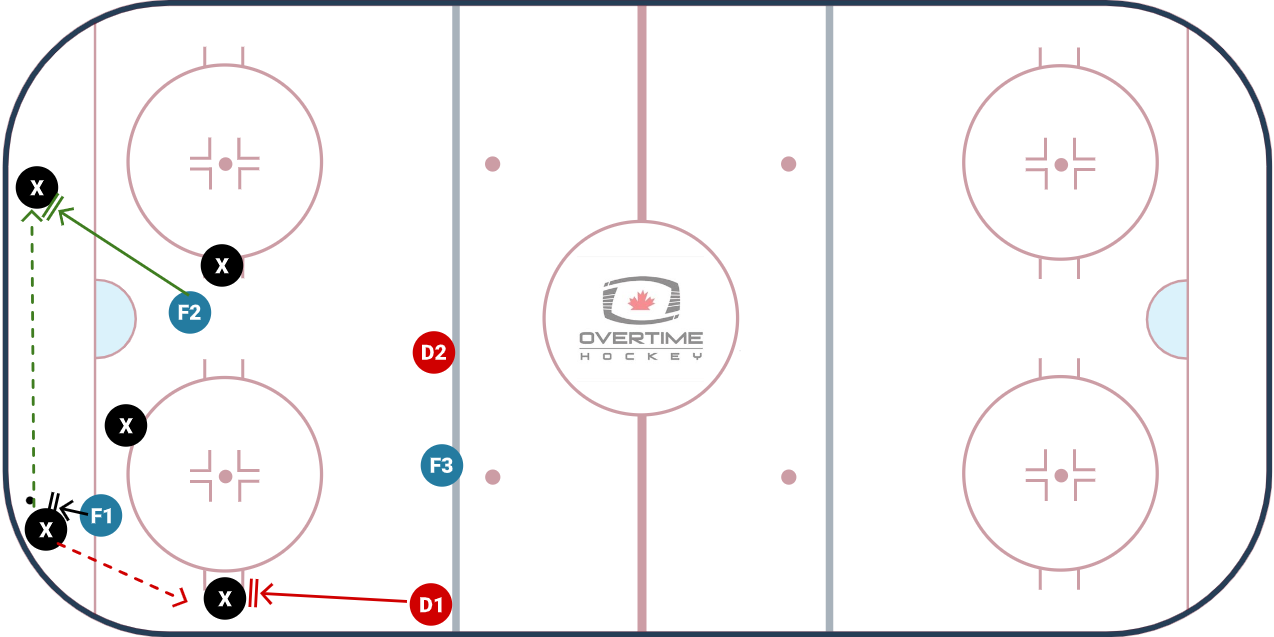 The "Crash & Bang" forecheck, the 2-3 is an awesome forecheck to set the tone. This is a favourite forecheck among players because essentially everyone who touches the puck gets hit. F1 takes the body hard, F2 will take the body on any D to D options and the SSD will take the body if they work the puck to the SSW. If the puck is able to work its way to the weakside, the line essentially shifts and the WSD pinches to take the body on the WSW.
The "Crash & Bang" forecheck, the 2-3 is an awesome forecheck to set the tone. This is a favourite forecheck among players because essentially everyone who touches the puck gets hit. F1 takes the body hard, F2 will take the body on any D to D options and the SSD will take the body if they work the puck to the SSW. If the puck is able to work its way to the weakside, the line essentially shifts and the WSD pinches to take the body on the WSW.
Strengths: A physical forecheck can set the tone early and intimidate the opponent in the Dzone forcing turnovers and have them second guessing time and space all game long.
Weakness: Size can obviously be an issue and if there is confusion the F3 comes off the line it can open up a odd man rush.
When to Use: This is a great forecheck to start the game with. Set the tone early, maybe you have a designated checking line and you keep them on this forecheck for the first period. I have used this for the first few minutes of each period in the past, gets the players amped up and can create a lot of energy out of the gate.
Summary
As with any system in hockey, there are countless ways to draw these up. The variations I have shared are ways I was able to find success within the youth game, maybe they work for you and your team, maybe they don't. I am a huge beliver in doing what we can as coaches to understand the game within the game so we can let our players do what they do best; play the game.
Comment below which one is your favourite forecheck!
